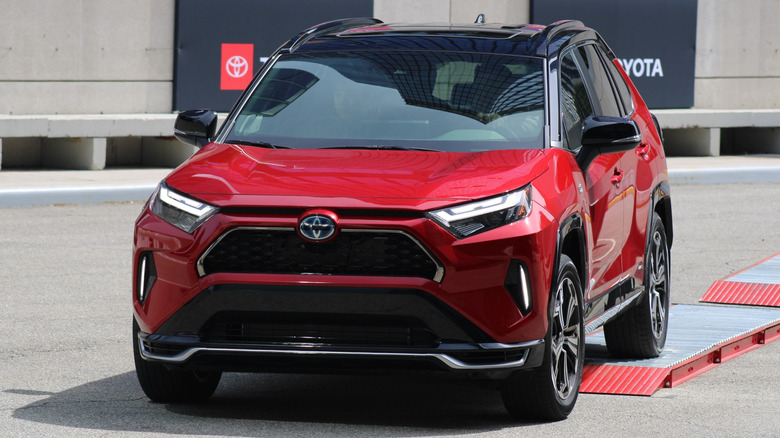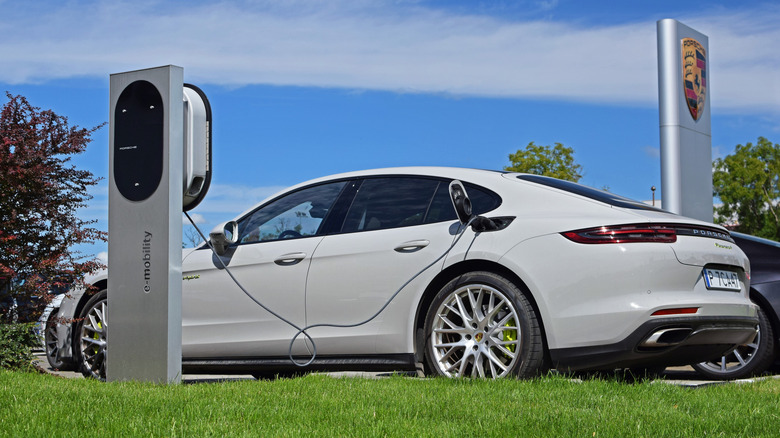What Happens If You Don't Charge A Plug-In Hybrid?
Before diving straight in and answering what happens if you don't charge a plug-in hybrid vehicle, let's first identify exactly what one is. Plug-in hybrids sit between full-fat battery-electric vehicles and conventional hybrids. A battery-electric vehicle is your typical EV — powered solely by electrical power, much like the 2024 Kia Nero EV we drove last year. A conventional hybrid, on the other hand, still uses a gas engine, although with an electric motor to assist with the running. The battery within a conventional hybrid charges via regenerative braking and the gas engine, which then powers an electric motor, improving fuel efficiency and reducing overall running costs.
People love the convenience of a conventional hybrid car, such as the Toyota Prius and its easter eggs, as there are no charging times. It's as straightforward as driving a traditional gas-powered vehicle. Plug-in hybrids, however, do have the option of being plugged in to charge, as the name suggests. The practical difference between a plug-in hybrid and a conventional hybrid is that the former can deliver electric-only range when fully charged, usually in the range of 20 to 50 miles. For anyone wondering what happens if a plug-in hybrid (PHEV) doesn't get plugged in and charged, though, the answer is actually quite simple and underwhelming: absolutely nothing happens.
Charging your PHEV isn't essential
The only downside to not charging a plug-in hybrid vehicle is that the driver will lose access to the car's electric-only range. The 2025 Toyota RAV4 Plug-in Hybrid, for example, offers up to 42 miles of electric range. If not plugged in, the RAV4 Plug-in Hybrid would operate exactly like the conventional RAV4 Hybrid, where the gas engine and regenerative braking keep the battery topped up as you drive along. Some plug-in hybrids can build up some electric-only range while driving, with estimates suggesting that up to four miles could be regained simply by descending a long, steep hill.
The ability to ignore the plugging in and charging aspect of plug-in hybrid ownership could actually be considered a huge selling point for PHEVs. Imagine, for instance, that you own an all-electric vehicle like the supercar-shaming Lucid Air Sapphire. If you forget to plug it in overnight, you may wake up in the morning to just a few miles of charge, putting you behind for the day — you'll likely need to spend time charging it before heading to work. Now, put yourself in the same scenario, but with a RAV4 Plug-in Hybrid in the garage instead. Even though you may prefer to have a fully charged battery, which would enable you to commute on guilt-free electricity, you can still hop in and drive away by relying on the gas engine.
Are plug-in hybrids redundant?
For some, the purpose of a plug-in hybrid might be quite tricky to understand at this point. Those who value the electric-only range would surely prefer an all-electric model. Conversely, wouldn't owners who don't charge their PHEVs, and therefore do not benefit from the all-electric range, be better off with a conventional hybrid? The latter part rings especially true, as plug-in hybrids are considerably more expensive than their conventional hybrid siblings. For example, the entry-level RAV4 Plug-in Hybrid SE has a starting MSRP of $44,265 (plus $1,350 destination), whereas the base-spec RAV4 Hybrid is around $12,000 less at $32,300 (plus $1,395 destination)
That gulf in pricing might be tricky for many motorists to justify. That said, plug-in hybrids still fulfill a role for those who enjoy commuting on silent, electricity-fueled miles but appreciate the stress-free range provided by a gas engine for longer trips. The trick here, though, is to ensure you charge up and make use of the electric range; otherwise, owning a plug-in hybrid is a little pointless, especially when considering the price premium compared to a conventional hybrid.


